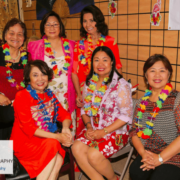The celebration of “Buwan ng Wikang Pambansa (National Language Month)” is ongoing for the whole month of August, with the theme, “Wika natin ang tuwid na daan.” (Our language is the straight path).
The Commission on the Filipino Language, in cooperation with the Department of Education, will spearhead the celebration which aims to encourage various government agencies and the private sector to participate in programs such as these — increasing language and civic awareness and motivating Filipinos to value the Filipino language.
The Buwan ng Wika 2013 organizers include the Philippine Consulate General here in Los Angeles, and the Philippine Institute of Language, Arts and Culture (PILAC).
Buwan ng Wika 2013 aims to promote and develop the Philippine language, its history and etymology; Philippine Arts, in terms of its phases; and development of a strong advocacy of the Filipino Language, Arts and culture among the members of the Filipino-American community here in LA, other parts of California and the entire United States of America.
The Father of Balagatasan
Francisco Balagtas (aka Francisco Baltazar) was the preeminent poet of the Tagalog language and author of the literary masterpiece, Florante and Laura. He has also written countless poems, awits, komedyas and corridos, securing his place at the pantheon of Tagalog poets, among other great Tagalog writers like Julian Cruz, Balmaceda and Hermenegildo Cruz, who refer to Balagtas “Hari ng Makatang Tagalog.”
What is Balagtasan?
“Ang Balagtasan ay isang sining kung saan inilalahad sa isang uri ng panitikan ang mga saloobin o mga gustong ipahayag ng isang tao sa pamamagitan ng pananalitang may mga tugma sa huli (rhyme). Isa itong uri ng pagtatalo ng dalawang magkaibang panig ukol sa isang paksa.”
During the American occupation, poetry was more than a personal art for the enjoyment of a small circle of initiates.
At that time, it was a popular art practiced by highly-skilled craftsmen for the instruction or delight of a broad public.
In 1924, a poetic event took place at the Instituto de Mujeres in Tondo, Manila. This became the balagtasan — a poetic joust patterned after the duplo of the 19th century.
It was conceived as a tribute to Balagtas — the literary giant of the 19th century who wrote the famous awit Florante at Laura, an allegory of the sad condition of the Philippines under the colonial regime of Spain.
It became such a popular form of entertainment — practically every poet of the period (if he was worthy of the title of “makata”) had to display his skill in declamation and argumentation as a Balagtasan poet.
In its original form, the joust was written by only one poet, with parts assigned (in the manner of a verse playlet) to the intended participants in the “contest.”
Such was the first Balagtasan written by Jose Corazon de Jesus, the author of Bayan Ko, (the national anthem of the EDSA Revolution).
In this Balagtasan, a butterfly (paru-paro) and a bee (bubuyog) battled over a jasmine flower (kampupot).
Later, Benigno R. Ramos (in his two known Balagtasan poems) introduced social content, making the “contestants” proponents of specific philosophical/political positions, as in Dalagang Bayan Laban sa Dalagang Bukid (City Lass Versus Provincial Maiden, 1930) and Balagtasan ng Kalayaan. (Balagtasan of Freedom).
Later on, the Balagtasan assumed the form of debate in verse, where the poets had to improvise in verse while arguing a position that they had been appointed to defend.
Participants of Balagtasan
The Balagtasan is conducted with three participants: two debaters representing each opposing side and a narrator called a lakandiwa (male) or a lakambini (female). Judges are also present to determine the winner.
The reason behind the popularity of the Balagtasan is the fact that it is a battle, not only of informed intellect, but of the manner the participants speak and present their reasoning, as they take sides on burning political and social issues.
Debates are conducted in poetic verse and rhyme, which give spice to the rather serious topics. The audience is wowed by both the sharpness of the mind and artistic expression of the poet-debaters.
But what makes the Balagtasan so exciting is that it is a literary form which entertains — with elements of comedy, wit and theatrical presentation, the very ingredients that appeal to Filipinos’ light disposition as a people.
Meanwhile, the Balagtasan rehearsal at the Philippine Consulate is exhilarating — brimming with stimulating participants (Ilocanos, Bicolanos, Ilonggos, Pampanggos) in giddy pursuit of the perfect Balagtasan soul and essential theatricality, as the mambabalagtas seize, probe and explore new ways to keep their neurons unnaturally far away, bound to take it all.
At some point during and after rehearsals, as you go through performance anxiety, you realize what makes one say: “I need a drink!”






